The content of the article
How to get rid of the wireworm in the garden? This question worries many summer residents. The pest likes to make beets, carrots and potatoes. He is not squeamish about corn and barley.
The fight against it is complex. All methods are divided into two types: agrotechnical and chemical. In the network you can find the most unusual ways. Some are in doubt, so let's figure it out.
Agrotechnical measures
Compliance with crop rotation. Each year, transfer the landing to another place, while returning to the old no earlier than in 4 seasons. Well, if the area of the site allows it. But some gardeners are forced to plant, for example, potatoes for many years on the same spot.
The life cycle of a click beetle is 5 years. Of these, for 4 years he has been a larva, the same wireworm. Therefore, the method works only with a five-year crop rotation.
Humidity. The wireworm likes moisture in the soil.With its lack of larvae die. Well, yes, it was during the dry summer of 2010 that almost all the country's summer residents complained about him. And only those who had the opportunity to constantly water their plantings did not see this nasty worm.
Accordingly, the larvae love dry soil. Under normal humidity, the wire is not always able to find food. And with increased he loses the ability to move and suffocates.
From here a conclusion - throw all forces on normal watering. Otherwise, you will again collect the remnants of holed root crops.
Weeding. Very often you can see such a picture: beautiful, well-groomed vegetable gardens, and between the fields between them, wheatgrass beds, burdocks, sow thistles. And then the owners complain about the ineffectiveness of the method of weeding. Say, they have a garden, clean, and the wire is raging.
Keep clean not only the beds, but also the stitches between them and the adjacent areas. Clean wheat grass, burdock and sow thistles. If you need grass between the gardens, then sow it with clover or lupine. The wireman does not tolerate them. Because on their roots live huge colonies of nodule bacteria that produce nitrogen.And the larvae do not like mineral salts and fertilizers.
Joint landing. It is for the above reason that it is recommended to plant legumes in one hole with potatoes. Of course, in a large area this is problematic. But in a small area is quite capable of everyone. At the same time saving seat.
It is only important to remember: if the potatoes are treated with insecticides, then the green blades of legumes cannot be eaten whole. But ripe beans, peas or beans are quite suitable for eating after peeling.
If you are still afraid that you will eat enough poison, then leave the harvest for joint planting next year.
Traps. The most effective disposal method. But very labor-intensive. Although, you also need your harvest whole? Without damage, rot, holes? Then let's get started:
- During the whole gardening season, seeds of barley or corn are planted in the affected area. On each weave they dig out 9-12 holes with a depth of no more than 5 cm. 16-18 grains soaked in an insecticide are placed on the bottom. Sprinkled with earth. As soon as the first shoots appear, dig up the contents of the hole, wonder at the number of larvae. Then it is taken out of the site and burned. Because it is very hard to crush a dense larva.If you are not squeamish, you can break each of your fingers in half.
- They arrange the same wells, but instead of grains they fill in a handful of raw fresh manure or wet moist grass. Just do not sprinkle with earth, and cover with scraps of boards or pieces of slate. After 2 days you can collect the "harvest".
- Old root vegetables are cut into medium cubes, soaked them in a solution of any insecticide for 2 hours. Then instilled in the same wells as described above. There is no need to dig them up, because the wireworm will consume the poisoned treat and die.
- If you are opposed to the use of chemicals in your area, then add the cubes of root vegetables without soaking. Then every 3 days you will have to pick out the bait from the dimples, take it out of the site. There it must be burned with pests. So that they burn well, they are either thrown into a powerful bonfire, or the old-fashioned way is poured with kerosene (gasoline) and set on fire.
- Put on a twig, stick or wire on a piece of root. Bury the structure to a depth of about 12 cm so that the visible tail remains on the surface.After a day or two, you can dig out the "good" and admire the vile guests.
- Lay on the beds strip of polyethylene or oilcloth, smeared with thick sugar syrup. Adult beetles and many other pests fly together on such bait. But they will not be able to peel off and run away. Only use this method in early spring or autumn, when there is no active summer of bees and bumblebees. Otherwise, they also stick to the strip in pursuit of sweets.
- Finely chopped root vegetables are placed in glass or plastic containers, and a little liquid sugar syrup is poured. They are added dropwise at the site so that the neck of the container is at a depth of 1-1.5 cm below the soil level. Every day check. Inside there will be both wireworm larvae and beetles. You can not add syrup, then by all means take a vessel with a narrow neck, so that adults could not fly out.
Supplements at landing. Some substances that kill or frighten the wireworm are laid in the hole with the tuber.
- Specialized soil. On the packaging, and it says "Protection." His need just a pinch. In this ground is a predatory nematode that does not harm the club or other insects.But she loves to eat the wireworm larvae. You can also fill this soil in a bed with a thin layer before sowing beet seeds and carrots. Sometimes it is enough to make one in 4 years. Nematode kills 70 to 99% of the larvae.
- Eggshell, finely ground. Mixed with fragrant sunflower oil in a ratio of 1 to 1. One well is enough dessert spoon. Having tasted such treats, the wireman dies almost immediately.
- A handful of onion peel or dry citrus peels. Also made when landing. In the opinion of good scares many pests.
- Dry needles of pine or spruce. Matchbox on one landing hole.
Salt. Simple kitchen salt. She generously scatter on the surface of the earth, then harrowed. The wireman quickly leaves this soil. But the procedure can be repeated only after 7 years, not earlier. Otherwise, together with the pest will leave the lion's share of the crop.
Digging. In the autumn, after the onset of the first stable frosts, they plow or dig up the soil. Pupated larvae and adults hibernating will die from frost. At the same time, the processing depth must be at least 16-18 cm, otherwise there will be no good.
In the spring, immediately after the thawing of the ground, but before the start of the main plantings, it is recommended to re-dig the beds, while carefully breaking up large clods. Sunlight is detrimental for overwintered larvae. And the rest will pick up the birds.
Chemical measures
Liming. This nasty insect loves sour soils. Therefore, be sure to deoxidize the soil regularly. This may be the introduction of lime, chalk, dolomite flour, ash. Only ash should be from hardwood.
Legendary potassium permanganate. Before planting, spill the soil with a warm pale pink solution. It is possible to plant and sow cultural plants no earlier than a day after such treatment.
Early in the spring, immediately after the soil warms up and in August, after the harvest, they do not wait until the pest crawls to other places of nutrition. Thoroughly shed the earth with a strong maroon solution, with a temperature of about 80 ° C. At the same time pickle a large part of the pathogenic bacteria and pathogenic microbes.
Pre-treatment of tubers. They are sprayed with special long-acting drugs. For 56-58 days, protection against pests occurs.After this period, the wire will again attack the landing. However, if during these two months you held other events, then it is quite possible that there will be no one to devour the harvest.
Mineral salts. Ammonium sulphate entering into the ground. On 1 square. 16-18 g of fertilizer is enough. Spread evenly over the surface of the soil and close up with a flat cutter, rake or harrow. Subsequent watering or natural rain will allow the mineral salt to penetrate into deeper layers. Larvae of such additives do not like. You can replace ammonium nitrate. The dosage is identical.
There is a recipe that reviews well helps too. It is necessary to dilute 2 ml of ammonia in 10 liters of water. This solution is watered planting under the root. Up to half a liter per plant. Processing is carried out once a month.
Useful tips
- Along the perimeter of the site and, if possible, in between the rows, plant the tagges (marigolds). From the larvae do not get rid of, but adults bypass such beds side.
- Do not leave the food wire in the winter. That is, remove the entire crop from the site. Many gardeners do not clean small roots, maybe over the winter they will rot.This is by itself, but before the decay they will have time to feed a considerable number of larvae. Therefore, dig even the smallest carrots and potatoes.
- Earth should not be empty. Look in nature, is there anywhere a bare patch of soil? Not. So your site after harvest must be sown with green manure. Best help to get rid of the wireworm clover, rye, white mustard. In the spring, all this stuff must be dug up right with stems and leaves. So you also get a good dose of natural organic fertilizer. At the same time in the soil will increase the nitrogen content. After such an addition, the wireworm will bypass your beds, nitrogen is not to the taste of the larvae.
- If you have chickens in the farm, do not burn the worms collected in the trap. Give them to your birds, let them eat.
Otherworldly forces
There is a recommendation to sprinkle the area with holy water or read plots. An interesting tip. We do not diminish the significance of such procedures for those people who believe in their effectiveness. We simply urge to remember the well-known popular wisdom: "Trust in God, but do not make good."One spraying of holy water or abandoned words will be scarce if you then sit down with folded hands. Expect to get rid of the misfortune can be very long, if you do nothing yourself.
How to get rid of the wireworm in the garden? The most important thing is to comply with the full range of activities for five years. Because having destroyed the first wave of larvae, you will be delighted and fold the handles. But after all they will be replaced by grown up individuals. Do not give up, and soon you will be able to clean your garden from this unpleasant scourge.
Video: how to beat wireworm


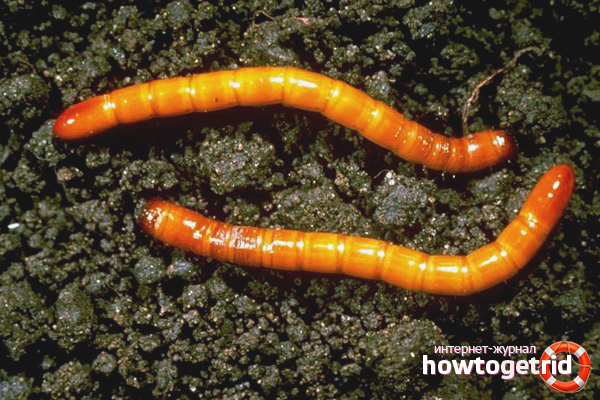

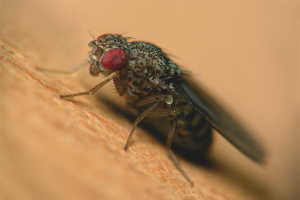
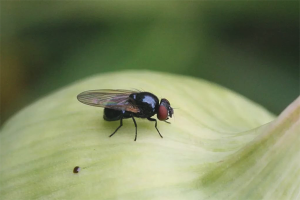

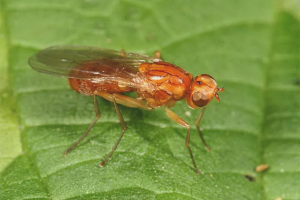

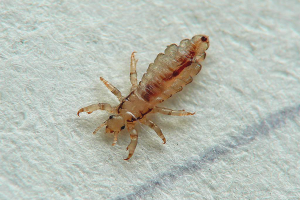


To send